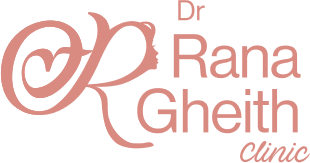Laser Skin Resurfacing
Laser skin resurfacing is a cosmetic procedure that helps reduce various skin issues such as wrinkles, scars, and uneven skin tone. In this article, we will present essential information about this technique and the necessary pre- and post-procedure steps.

What is Laser Skin Resurfacing?
Laser skin resurfacing, or laser peeling, is a cosmetic procedure where layers of skin are removed, allowing new skin cells to form during the healing process. This results in a beautiful and youthful appearance. Below are some of the diverse techniques used for this procedure:
CO2 Laser
This method has been used for many years to treat various malignant and benign skin conditions. The new generation of CO2 lasers uses very short-pulsed light energy to remove thin layers of skin. This method has been successfully used to treat wrinkles, scars, and benign skin growths such as warts and birthmarks. Recovery from this method takes more than two weeks.
Erbium Laser
The erbium laser helps remove superficial and medium-depth lines and wrinkles on the face. It usually requires only local anesthesia. This laser can also be used on the hands, neck, and chest. This type has fewer side effects, such as swelling, redness, and bruising, compared to the CO2 laser, and recovery takes about a week. It is also a suitable option for people with darker skin tones.
Fractional Laser
This type of laser causes minimal skin damage. However, the risk lies in the fact that the light penetrates deeper than other types, increasing the risk of difficult recovery and scarring. Recovery from this type takes about a week.
Indications for Laser Skin Resurfacing
You may be an ideal candidate for laser skin resurfacing if you have:
- Scars from chickenpox or acne
- Uneven skin tone
- Birthmarks
- Sun-damaged skin
- Wrinkles and fine lines under or around the eyes, mouth, or forehead
- Skin that has not responded well to a facelift
- Enlarged oil glands on the nose
- Age spots
Contraindications for Laser Skin Resurfacing
You may not be an ideal candidate for this procedure if you have:
- Active acne
- Very dark skin
- Deep wrinkles
- Sagging skin
Steps of Laser Skin Resurfacing
Here are the steps of this procedure:
- Skin Preparation:Before the laser skin resurfacing procedure, the skin needs to be prepared with a series of treatments conducted several weeks prior to the procedure. These treatments aim to increase the skin’s tolerance to the treatment and reduce the risk of side effects.
- On the Day of the Procedure:The doctor will apply a local anesthetic to the area to be treated to reduce pain during the procedure. For large areas, a sedative or pain reliever may be suggested.
- Skin Cleaning:The doctor cleans the skin to remove any excess oils, bacteria, or dirt.
- Laser Application:The doctor uses the appropriate laser type by slowly moving the device around the treated area.
- Post-Procedure Care:The doctor covers the treated area to protect the skin after the procedure.
Pre-Laser Skin Resurfacing Tips
Here are some guidelines to follow before this procedure:
- Avoid intense sun exposure for at least four weeks before treatment.
- Avoid deep skin peels for four weeks before treatment.
- Avoid taking photosensitizing medications, such as doxycycline for bacterial infections, 72 hours before treatment.
- If you have a history of herpes in the area to be treated, inform the doctor and start taking antiviral medications like valacyclovir two days before treatment and continue for three days after treatment.
- To prepare the skin, the doctor may recommend using a topical retinoid cream on the area to be treated four weeks before treatment.
Post-Laser Skin Resurfacing Tips
After undergoing this cosmetic procedure, follow the doctor’s instructions for quick skin recovery. Here are some tips:
- Post-treatment, the skin may show side effects such as swelling, redness, and itching. Do not scratch the skin or remove crusts, as this can cause scarring or infection.
- Clean the treatment area daily, two to five times as per the doctor’s instructions.
- Sleep with an extra pillow for the first four days to help reduce swelling.
- Apply cold compresses to the treated area for 15 minutes every one to two hours as needed for the first two days after treatment.
- Apply a thin layer of petroleum jelly or antibiotic cream to the treated area twice daily until the skin heals.
- Avoid harsh facial treatments such as glycolic acid for four weeks, and avoid any topical products that may cause irritation for six weeks after treatment.
- Avoid activities that may cause facial redness for two weeks after treatment.
- Avoid smoking, as it slows down the healing process.
Side Effects of Laser Skin Resurfacing
Here are some side effects that may result from this procedure:
- Redness
- Swelling
- Itching
- Rash
- Infection
- Hyperpigmentation
- Scarring
- Burns
Laser Skin Resurfacing at Dr. Rana Gheith's Center
At Dr. Rana Tariq Gheith’s Center, we use the latest laser devices and techniques to achieve the best results in laser skin resurfacing without side effects. The best technique for use is determined after an examination and assessment of the skin problems being treated.

Follow us